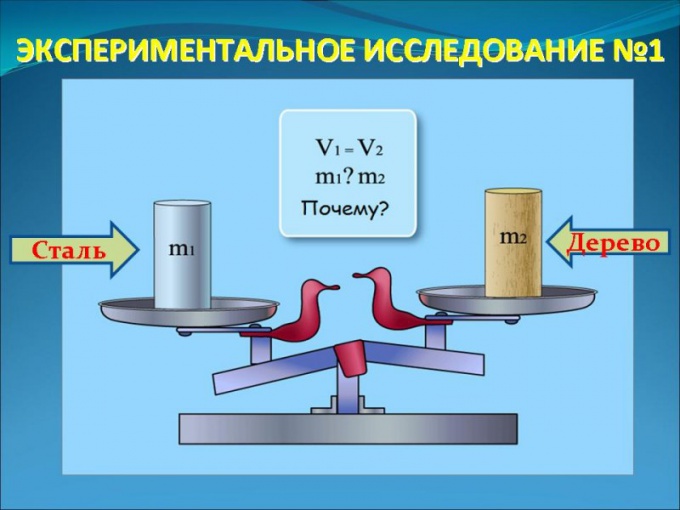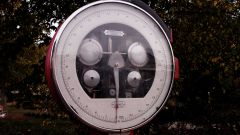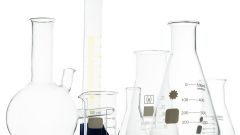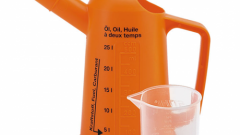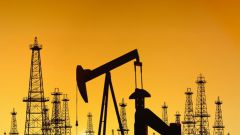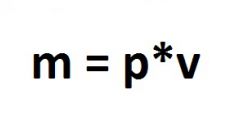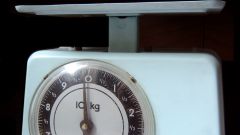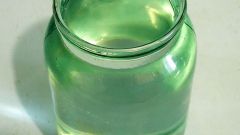The value that shows the number of kilograms in a liter of a substance is called density.
Is the average density of body, density of the substance, the density of the body at the point. The average density of a body is the ratio of body mass to its volume. The density of a substance is the ratio of the mass of a substance to its volume. The density of the body at the point is the ratio of body mass to volume, which tends to zero.
Another is the true and apparent density. True density is the density that is defined without consideration of voids, and the apparent taking into account the voids.
It is established that the density of the material with increasing temperature decreases. This is due to increasing porosity. However, in nature, occurs in a number of substances, the density of which deviates from the General relation. So, water has a maximum density of 1 kg/l, it is achieved at a temperature of + 4oC. As temperature decreases, its density decreases, reaching 0.93 kg/l (below 0 oC). That's why ice floats on water.
When switching from one aggregate state to another the density changes abruptly.
1. The average density of Earth is 5.5 kg/L.
2. Density of river water is 1 kg/L.
3. The density of granite is 2.6 kg/l.
4. The density of solar material – 1.5 kg/l.
5. The biggest density in the world belongs to metal to osmium – 23 kg/L.
6. The density of iron is 7.9 kg/l.
7. The density of an atomic nucleus is 2*1014 kg/l.
8. The density of air of 1.29 kg/l.
9. The density of carbon dioxide is 1.98 kg/l.
10. The density of sea water is 1.03 kg/L.
11. The density of milk is 1.04 kg/l.
12. The density of oil – 0,81-0,85 kg/l.
13. The average wood density of 0.7 kg/l.
14. The density of alcohol is 0.8 kg/l.
15. The density of mercury is 13.6 kg/L.
More detailed information can be found from any Handbook of physical-chemical variables.
Pycnometer – a vessel for measuring the true density of matter in all aggregate States. The hydrometer is a sealed glass vessel for measuring the density of liquids. The principle of operation is based on Archimedes ' principle.
Bur Kaczynski is a highly specialized instrument for determining the density of soils. The principle of operation is based on a very precise selection of a given volume of soil.
Species density
Is the average density of body, density of the substance, the density of the body at the point. The average density of a body is the ratio of body mass to its volume. The density of a substance is the ratio of the mass of a substance to its volume. The density of the body at the point is the ratio of body mass to volume, which tends to zero.
Another is the true and apparent density. True density is the density that is defined without consideration of voids, and the apparent taking into account the voids.
The dependence of density on temperature
It is established that the density of the material with increasing temperature decreases. This is due to increasing porosity. However, in nature, occurs in a number of substances, the density of which deviates from the General relation. So, water has a maximum density of 1 kg/l, it is achieved at a temperature of + 4oC. As temperature decreases, its density decreases, reaching 0.93 kg/l (below 0 oC). That's why ice floats on water.
When switching from one aggregate state to another the density changes abruptly.
Density, which can be found in nature
1. The average density of Earth is 5.5 kg/L.
2. Density of river water is 1 kg/L.
3. The density of granite is 2.6 kg/l.
4. The density of solar material – 1.5 kg/l.
5. The biggest density in the world belongs to metal to osmium – 23 kg/L.
6. The density of iron is 7.9 kg/l.
7. The density of an atomic nucleus is 2*1014 kg/l.
8. The density of air of 1.29 kg/l.
9. The density of carbon dioxide is 1.98 kg/l.
10. The density of sea water is 1.03 kg/L.
11. The density of milk is 1.04 kg/l.
12. The density of oil – 0,81-0,85 kg/l.
13. The average wood density of 0.7 kg/l.
14. The density of alcohol is 0.8 kg/l.
15. The density of mercury is 13.6 kg/L.
More detailed information can be found from any Handbook of physical-chemical variables.
What measures density?
Pycnometer – a vessel for measuring the true density of matter in all aggregate States. The hydrometer is a sealed glass vessel for measuring the density of liquids. The principle of operation is based on Archimedes ' principle.
Bur Kaczynski is a highly specialized instrument for determining the density of soils. The principle of operation is based on a very precise selection of a given volume of soil.
